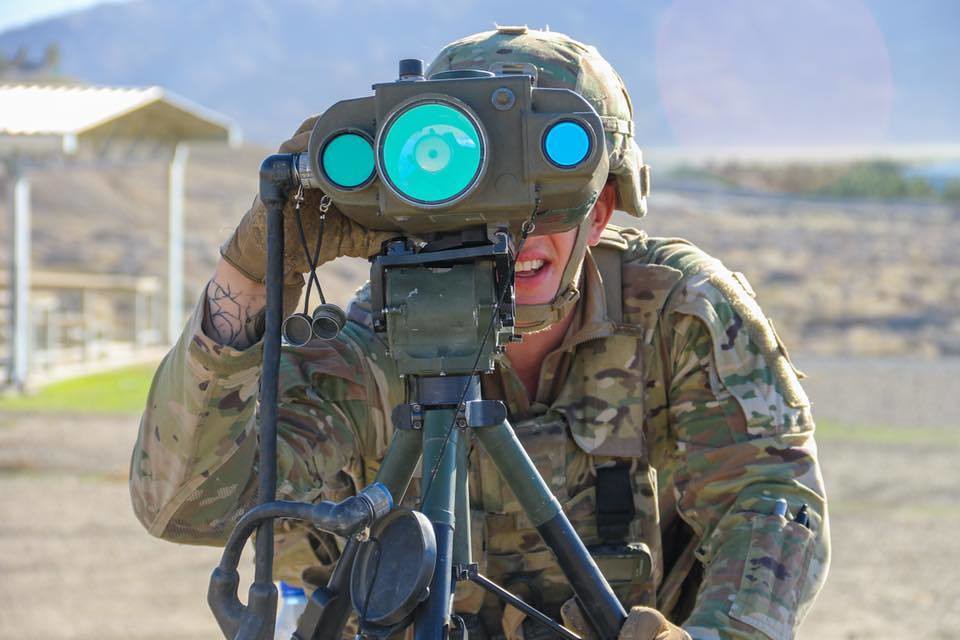

Topic Objective
Develop and demonstrate Machine Learning based radar algorithms/techniques to improve Point of Origin (POO) Target Location Accuracy (TLA) in Counter-fire Target Acquisition (CTA) applications for semi-ballistic trajectories.
Description
With the emergence of advanced threats, such as semi-ballistic RAM, the Army is interested in enhancing its ground-based CTA radar systems with the ability to better track/discriminate the advanced threats in order to improve POO TLA. The existing approaches, focused on ballistic trajectories, result in significant Target Location Errors against semi or non-ballistic targets. Significantly improving the Target Location Accuracy (TLA) against these advanced threats is a high Army priority. The main purpose of this effort is to investigate, develop, and demonstrate Machine Learning Based Radar algorithms/techniques to improve POO TLA in CTA applications for semi-ballistic RAM.
Effective deployment of these advanced algorithms may serve to enhance the performance of current and future Army CTA radar systems such as the AN/TPQ-50 and AN/TPQ-53. Both Programs of Record are funded annually for modernization efforts, commonly referred to as Modernization Development Efforts (MDE), which provide a conduit for the integration of improved hardware and emerging software algorithms. This includes initial design and development efforts, laboratory design, productization into the software baseline, and field-testing.
Phase I
Identify candidate Machine Learning (ML) based algorithms that address the challenge described in the objective section of this document. Investigate current tracker/discrimination functionality, investigate emerging applicable threats as delineated in the Validated Online Lifecycle Threat (VOLT), develop suitable ML based track/discriminate algorithms, conduct studies on candidate algorithms (size, power consumption, speed, and complexity), and perform laboratory testing on viability of candidate models and algorithms. At end of Phase I, prepare and present a study report to: (1) identify algorithms that improve POO TLA for semi and non-ballistic trajectories, (2) provide process and schedule for productization into the software baseline, and (3) demonstration plan for Phase II.
Phase II
Develop and demonstrate improvements to POO TLA for semi-ballistic trajectories during Live Test Events at Yuma Proving Ground, Arizona utilizing current ground-based Army radar systems.
Phase III
Productization of improvements into the software baseline: provide analysis, design updates, implementation support, and systems engineering testing for proposed algorithmic updates developed under Phase I and demonstrated in Phase II. Additionally, update the software and firmware to accommodate the final design and provide the following: software source code and executable files, system/subsystem specification updates, and performance specification document updates. Lastly, prepare lab tests, engineering test plans, and procedures to demonstrate the performance of the algorithms during a test event.
Submission Information
To submit full proposal packages, and for more information, visit the DSIP Portal.

References:
Rakdham, M. Tummala, P. E. Pace, J. B. Michael and Z. P. Pace, “Boost Phase Ballistic Missile Defense Using Multiple Hypothesis Tracking,” 2007 IEEE International Conference on System of Systems Engineering, San Antonio, TX, 2007
Christopher, M. Bishop. Pattern Recognition and Machine Learning. Springer-Verlag New York, 2016.
Duda, Richard O., Peter E. Hart, and David G. Stork. Pattern classification. John Wiley & Sons, 2012.
Topic Objective
Develop and demonstrate Machine Learning based radar algorithms/techniques to improve Point of Origin (POO) Target Location Accuracy (TLA) in Counter-fire Target Acquisition (CTA) applications for semi-ballistic trajectories.
Description
With the emergence of advanced threats, such as semi-ballistic RAM, the Army is interested in enhancing its ground-based CTA radar systems with the ability to better track/discriminate the advanced threats in order to improve POO TLA. The existing approaches, focused on ballistic trajectories, result in significant Target Location Errors against semi or non-ballistic targets. Significantly improving the Target Location Accuracy (TLA) against these advanced threats is a high Army priority. The main purpose of this effort is to investigate, develop, and demonstrate Machine Learning Based Radar algorithms/techniques to improve POO TLA in CTA applications for semi-ballistic RAM.
Effective deployment of these advanced algorithms may serve to enhance the performance of current and future Army CTA radar systems such as the AN/TPQ-50 and AN/TPQ-53. Both Programs of Record are funded annually for modernization efforts, commonly referred to as Modernization Development Efforts (MDE), which provide a conduit for the integration of improved hardware and emerging software algorithms. This includes initial design and development efforts, laboratory design, productization into the software baseline, and field-testing.
Phase I
Identify candidate Machine Learning (ML) based algorithms that address the challenge described in the objective section of this document. Investigate current tracker/discrimination functionality, investigate emerging applicable threats as delineated in the Validated Online Lifecycle Threat (VOLT), develop suitable ML based track/discriminate algorithms, conduct studies on candidate algorithms (size, power consumption, speed, and complexity), and perform laboratory testing on viability of candidate models and algorithms. At end of Phase I, prepare and present a study report to: (1) identify algorithms that improve POO TLA for semi and non-ballistic trajectories, (2) provide process and schedule for productization into the software baseline, and (3) demonstration plan for Phase II.
Phase II
Develop and demonstrate improvements to POO TLA for semi-ballistic trajectories during Live Test Events at Yuma Proving Ground, Arizona utilizing current ground-based Army radar systems.
Phase III
Productization of improvements into the software baseline: provide analysis, design updates, implementation support, and systems engineering testing for proposed algorithmic updates developed under Phase I and demonstrated in Phase II. Additionally, update the software and firmware to accommodate the final design and provide the following: software source code and executable files, system/subsystem specification updates, and performance specification document updates. Lastly, prepare lab tests, engineering test plans, and procedures to demonstrate the performance of the algorithms during a test event.
Submission Information
To submit full proposal packages, and for more information, visit the DSIP Portal.
References:
Rakdham, M. Tummala, P. E. Pace, J. B. Michael and Z. P. Pace, “Boost Phase Ballistic Missile Defense Using Multiple Hypothesis Tracking,” 2007 IEEE International Conference on System of Systems Engineering, San Antonio, TX, 2007
Christopher, M. Bishop. Pattern Recognition and Machine Learning. Springer-Verlag New York, 2016.
Duda, Richard O., Peter E. Hart, and David G. Stork. Pattern classification. John Wiley & Sons, 2012.
